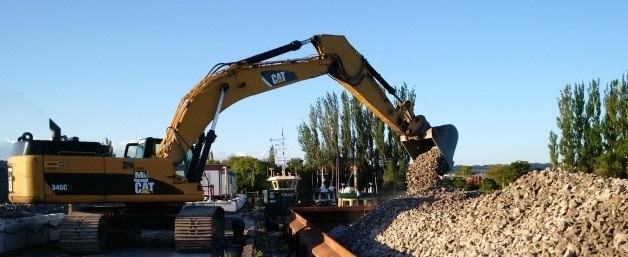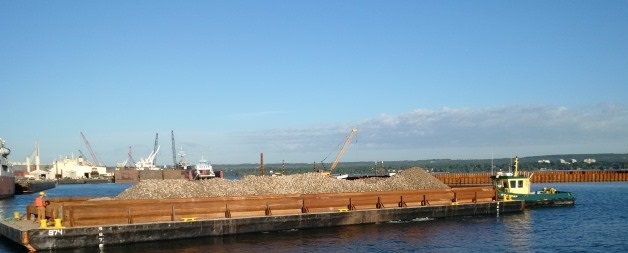Hamilton Harbour Randle Reef
While the aggregates we produce are most recognizably used for infrastructure projects – think road base or concrete for buildings, highways and bridges—they can also be an important component of environmental remediation projects. Dufferin Aggregates’ participation in the Hamilton Harbour Randle Reef sediment remediation project, the largest and most contaminated site within the Canadian side of the Great Lakes, is a case in point. The Randle Reef site is approximately 120 football fields in size, containing approximately 695,000 cubic meters of sediment contaminated with toxins (polycyclic aromatic hydrocarbons) and heavy metals.
This contamination is a legacy from a variety of past industrial processes dating back to the 1800s. It includes everything from, coal gasification, petroleum refining, steel making and associated coking to municipal waste, sewage effluent and overland drainage.
Randle Reef involves building a completely sealed engineered containment facility around the section of the most contaminated sediment in the harbour. Dufferin Aggregates supplied over 170,000 tonnes of clear stone and granular for this project.
The clear stone product is designed to ensure structural integrity of the containment facility. It will not only support the steel wall during movement of the water through wave or ice action, but it will also aid in supporting the facility once it is capped.
The estimated cost of the remediation project is $138.9 million. Environment Canada, the Ontario Ministry of the Environment, the City of Hamilton, the Hamilton Port Authority, U. S. Steel Canada, the City of Burlington, and the Regional Municipality of Halton are all helping in putting up the money. Once the facility is filled with aggregate and capped, the Randle Reef facility will be utilized as a port facility. This approach of containing contaminated sediment in an engineered facility and creating usable land is a first in Canada.
This port will be taken over by the Hamilton Port Authority operating as a marine terminal and generating revenues in order to maintain it. With the surrounding areas being capped, it will allow marine life to migrate back into the surrounding area.
All photos courtesy of McNally Construction.



